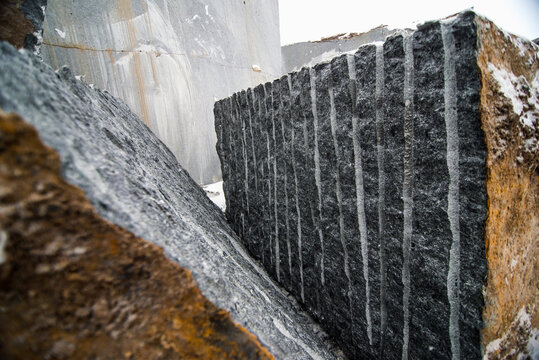Journeying Via Granite Quarries in South Africa: A Visual Odyssey
Journeying Via Granite Quarries in South Africa: A Visual Odyssey
Blog Article
Unearthing the Rich History and Sustainable Practices of Granite Quarrying
As we depend on the precipice of discovering the detailed tapestry of granite quarrying, a journey via time reveals not simply the physical act of drawing out stone yet also the cultural and historic value woven into the really material of this method. From the old origins that laid the structure for contemporary quarrying techniques to the sustainable methods that are forming the future of this market, each carve mark on granite surfaces tells a story waiting to be discovered (granite quarries in south africa). The legacy of granite quarrying extends much past simple removal; it is a testimony to human ingenuity, strength, and the enduring appeal of this magnificent rock
Ancient Beginnings of Granite Quarrying
Going back to old civilizations, the method of quarrying granite has been an integral part of human history and architectural innovation. The earliest evidence of granite quarrying go back to old Egypt, where huge pyramids and intricate sculptures were crafted from this durable rock. The Egyptians utilized primitive tools to remove granite blocks from quarries, showcasing the value of this material in their monumental buildings.
Moving on in history, the Greeks likewise made substantial payments to the quarrying of granite. The Greeks made use of granite in various architectural marvels, such as holy places and statuaries, demonstrating their skill in shaping and sculpting this hardy stone. The Romans further improved the techniques of quarrying granite, employing advanced devices like knives and hammers to essence and shape granite for their legendary frameworks.
With the centuries, the method of quarrying granite has actually evolved, with contemporary innovations improving effectiveness while maintaining the classic charm of this all-natural rock - granite quarries in south africa. From old worlds to modern building contractors, the tradition of granite quarrying remains to form our globe
Development of Quarrying Strategies
The evolution of quarrying methods has been marked by a continuous progression in the direction of better performance and accuracy in extracting granite. From the primary approaches used by our ancestors to the sophisticated technologies utilized in modern quarrying operations, the industry has actually undergone considerable developments. Early quarrying techniques included hand-operated labor with basic devices such as knives, hammers, and wedges to extract granite blocks from the planet. As human beings proceeded, techniques like fire-setting and primitive nitroglycerins were introduced to facilitate the extraction process.
Advancements in computer-controlled tools and 3D modeling have maximized quarrying operations, leading to very little environmental effect and enhanced sustainability techniques. As the need for granite proceeds to climb, the evolution of quarrying strategies remains integral to meeting industry requires successfully and sustainably.
Cultural Significance of Granite
Granite holds a profound social significance across numerous people as a result of its enduring visibility in building masterpieces and revered monoliths. From the magnificent pyramids of Egypt to the complex carvings of the Angkor Wat holy place in Cambodia, granite has been a product of selection for revealing splendour and durability in cultural heritage. In old Rome, home granite columns embellished temples and public buildings, signifying stamina and permanence. The cultural value of granite expands beyond its physical characteristics; it personifies resilience, stability, and timelessness, making it a symbol of sustaining heritages and traditions.

Sustainable Practices in Quarrying
Amidst the abundant history of granite quarrying and its social relevance lies a growing focus on lasting methods within the sector. As ecological recognition and problems about source exhaustion have enhanced globally, the quarrying field has actually significantly accepted lasting techniques to minimize its influence on the setting and bordering communities.

In addition, recovery and recovery of quarry sites post-extraction are integral to lasting methods. By restoring quarried areas to an all-natural or advantageous state, such as creating wild animals environments or leisure areas, quarriers can counter the environmental footprint of their operations and contribute positively to the regional ecosystem.
Tradition of Granite Quarrying
With a historical backdrop soaked in craftsmanship and industrial progression, what sustaining impact has granite quarrying left on the landscape of modern society? The heritage of granite quarrying transcends plain extraction practices; it has actually formed architectural marvels, urban landscapes, and cultural heritage worldwide. The resilient nature of granite has made it a preferred option for monoliths, buildings, and infrastructure, standing as a testimony to the ability and creativity of quarry workers across generations.
Furthermore, the economic footprint of granite quarrying can learn this here now not be ignored. The sector proceeds to provide employment possibility and drive regional economic climates in areas where granite extraction click this link prevails. It has likewise spurred technological developments in quarrying techniques and devices, resulting in a lot more efficient and lasting practices.
In terms of sustainability, the tradition of granite quarrying consists of efforts to alleviate ecological impacts via reclamation jobs and accountable resource monitoring. By stabilizing economic interests with environmental stewardship, the sector aims to make sure that future generations can continue to profit from this enduring natural deposit.
Final Thought

Report this page